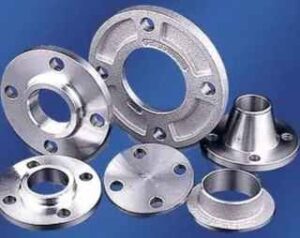ASME, founded in 1880, is a type of flange manufactured by the standards developed by the American Society of Mechanical Engineers (ASME). These standards cover the dimensions, materials, and testing requirements for flanges, as well as the pressure-temperature ratings for different types of flanges.
Understanding of ASME Flanges
ASME flanges are designed to meet specific criteria, including dimensions, materials, and pressure-temperature ratings. The ASME B16.5 standard, in particular, is widely used for pipe flanges and flanged fittings. ASME B16.5 covers flange dimensions, bolt sizes, facing types, and other important factors that ensure flanges are compatible and can safely connect pipes and equipment in various industries.
Benefits of using ASME flange
There are many benefits to using ASME flanges, including:
- They are made to high standards of quality and reliability.
- They are available in various types and materials to suit various applications.
- They are easy to install and maintain.
- The reputation of the ASME, a respected engineering organization, backs them.
Types of ASME Flanges:
The most common types of ASME flanges include:
- Slip-on flanges: They are easy to install, but they are less strong than other types of flanges.
- Socket weld flanges are similar to slip-on flanges but have a socket into which the pipe fits.
- Blind flanges: Blind flanges are used to close off the ends of pipes.
ASME Flanges Standard:
Here are some of the ways that ASME flanges set the standards for pipe flanges:
- Dimensional consistency: ASME flanges are manufactured to precise dimensional tolerances. It ensures that flanges from different manufacturers will be compatible with each other.
- Material quality: ASME flanges are made from high-quality materials selected for their strength, durability, and corrosion resistance.
- Testing requirements: ASME flanges must undergo various tests to ensure that they meet the standards for pressure-temperature ratings, leak tightness, and other important properties.
- Third-party certification: Many ASME flanges are certified by third-party organizations. This certification provides additional assurance that the flanges meet all applicable standards.
How to choose the right ASME Flange
When choosing an ASME flange, there are a few factors you need to consider, including:
- The pressure and temperature rating required for the application.
- The type of fluid being transported.
- The material of the pipe and other fittings being connected.
- The budget is available.
ASME Flange Dimensions and Materials:
ASME flange dimensions and materials are specified in the ASME B16.5 standard. This standard covers the dimensions, materials, and pressure-temperature ratings of ASME flanges.
- Flange dimensions (flange diameter, bolt circle diameter, and bolt hole diameter)
- Flange materials (carbon steel, stainless steel, and alloy steel)
- Flange pressure-temperature ratings
- Bolt types (hex head bolts, square head bolts, and socket head cap screws)
- Bolt materials (carbon steel, stainless steel and alloy steel)
- Bolt sizes (bolt diameter and thread length)
Materials Use in ASME Flanges:
Here are some of the most common materials used for ASME flanges:
- Carbon steel
- Stainless steel
- Alloy steel
- Monel
- Inconel
- Hastelloy
Pressure-Temperature Ratings:
Here are some tips for selecting ASME flanges with the appropriate pressure-temperature rating:
- Consider the maximum pressure and temperature that the flanges will be exposed to.
- Select flanges with a pressure-temperature rating equal to or greater than the maximum pressure and temperature.
- Consult with the ASME B16.5 standard to determine the pressure-temperature rating of a specific flange type, material, and temperature.
- Consult with a qualified engineer if you need help determining the pressure-temperature rating of an ASME flange.
Flange Facing Types:
Here are some general guidelines for choosing a flange-facing type:
- Flat-face flanges are commonly used for low-pressure and temperature applications.
- Raised face flanges are commonly used for high-pressure and temperature applications.
- Ring-type joint flanges are commonly used for very high-pressure and temperature applications.
- Lap joint flanges are used to connect two pipes of different sizes.
- Male and female flanges are used to create a leak-tight seal.
- Tongue and groove flanges are used to create a strong and reliable connection.
ASME Flanges Applications:
Here are some applications where ASME flanges are commonly used:
- Power plants
- Oil and gas refineries
- Petrochemical plants
- Chemical processing plants
- Food and beverage processing plants
- Water and wastewater treatment plants
- Marine vessels
- Aerospace applications
Conclusion:
In conclusion, You know about ASME flanges, including the different types of ASME flanges, the benefits of using ASME flanges, how to choose the right ASME flange for your application, and how to install and maintain ASME flanges. ASME flanges are an important component of many piping systems. They provide a reliable, leak-tight way to connect pipes, valves, and other fittings. ASME flanges are also available in various types and materials to suit various applications.
For all your flange steel requirements, consult with reputable manufacturers and suppliers like Texas Flange, who can provide the right flange solutions tailored to your application’s demands.
